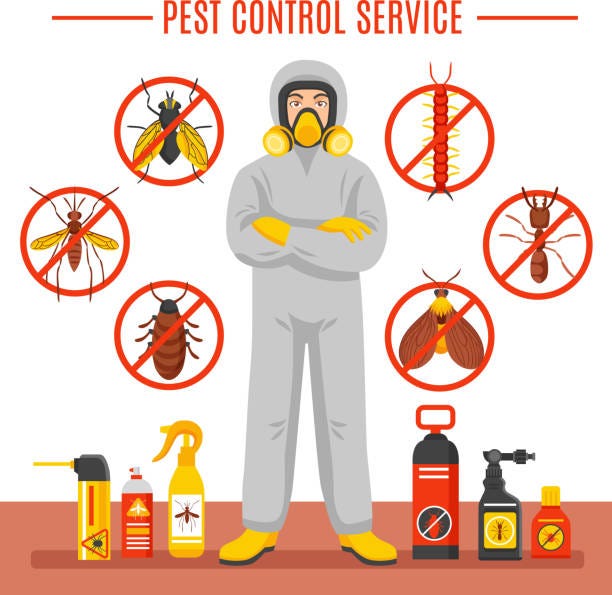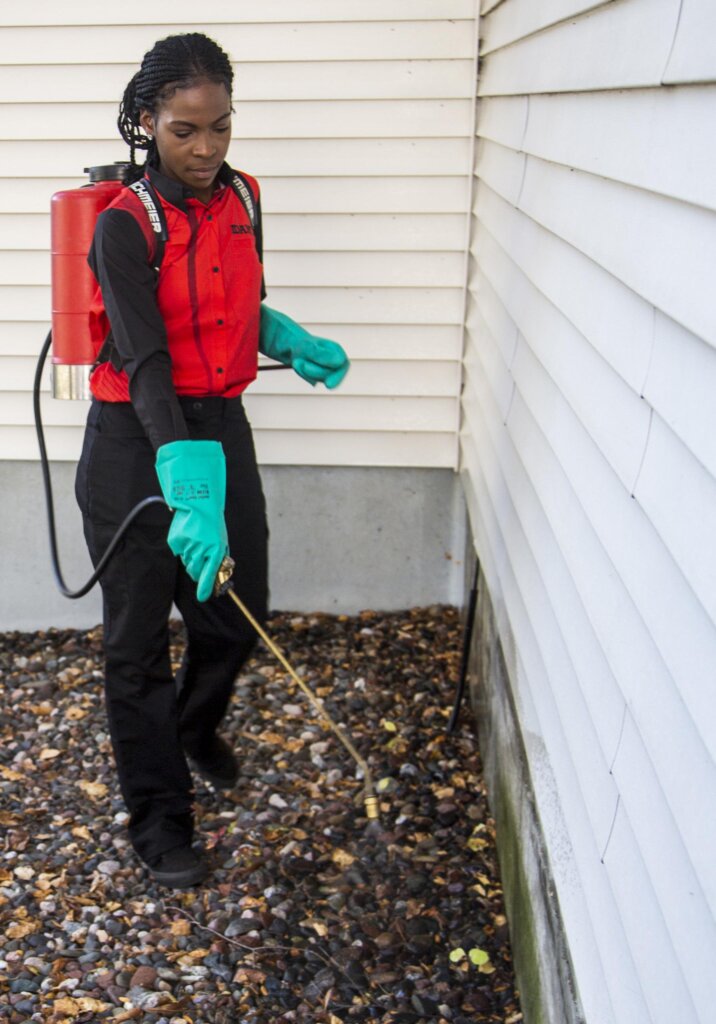A1 Bed Bug Exterminator Charlotte - Specialized Bed Bug Elimination
A1 Bed Bug Exterminator Charlotte - Specialized Bed Bug Elimination
Blog Article
Bed Insect Treatment Malfunction: Contrasting Chemical Vs. Non-Chemical Solutions
In the world of insect control, specifically when handling the consistent issue of bed pests, the choice in between chemical and non-chemical therapy solutions can be a pivotal one. Both techniques offer distinct advantages and disadvantages, affecting elements such as effectiveness, safety considerations, and total price. By checking out the nuanced details of each method, a more clear understanding of which course to seek in addressing a bed bug problem can be acquired.
Efficiency of Chemical Treatments
Chemical therapies for bed insect invasions have actually been widely recognized for their powerful and quick effectiveness in getting rid of these parasites. When taking into consideration the effectiveness of chemical therapies, it is essential to comprehend that they can offer a quick and extensive option to a bed insect trouble. Professional pest control specialists frequently rely upon insecticides to target bed pests at different stages of their life process, including adults, eggs, and nymphs. These chemicals usually work by interrupting the bed pests' anxious system, leading to paralysis and eventual death.
Moreover, chemical therapies have the advantage of supplying recurring results, implying that they can remain to remove bed insects also after the initial application. This recurring activity is specifically useful in combating any type of prospective re-infestations. Furthermore, the fast action of chemical treatments can bring alleviation to individuals facing severe bed pest invasions, allowing them to regain control of their living spaces quickly.
Security Interest In Chemical Solutions
When making use of chemical options for bed bug therapy is making sure the security of residents and the atmosphere,One crucial facet that calls for careful factor to consider. While chemical treatments can be effective in removing bed insects, they may posture risks otherwise handled effectively. Among the main security worries with chemical remedies is the prospective damage they can create to human wellness. Exposure to particular chemicals utilized in bed bug therapies can lead to respiratory concerns, skin inflammation, or various other adverse responses, particularly in people with pre-existing conditions or sensitivities. In addition, inappropriate application or dosage of chemical pesticides can lead to poisonous residues lingering in the treated location, posturing lasting wellness dangers to residents.
In addition, the ecological impact of chemical remedies is an additional considerable factor to consider. Some chemicals made use of in bed bug therapies might be harmful to valuable bugs, wildlife, and ecological communities if they leach into the soil or water supply. It is necessary to use chemical therapies deliberately, complying with safety and security guidelines, and thinking about less hazardous choices to mitigate these risks and guarantee the reliable and risk-free administration of bed pest problems.
Advantages of Non-Chemical Strategies
Considering the possible safety problems and environmental effect linked with chemical solutions for bed insect treatment, checking out non-chemical methods provides an appealing alternative with several unique benefits. Non-chemical treatments are environmentally pleasant, as they do not add to air or water contamination, making them a sustainable option for bug control.
In addition, non-chemical services can be effective in targeting bed insects, including hard-to-reach locations where chemical treatments may not penetrate. Techniques such as heat therapy, vacuuming, heavy steam cleaning, and mattress encasements provide complete elimination without the usage of harmful chemicals. Additionally, non-chemical techniques can be much less disruptive, requiring minimal prep work and allowing for quicker reentry into treated areas. Overall, going with non-chemical bed pest therapy techniques not just focuses on security and environmental defense yet also makes certain effective and comprehensive bug control.
Limitations of Non-Chemical Treatments

In addition, non-chemical treatments typically need numerous applications to achieve effective obliteration. This can be time-consuming and may not constantly assure full elimination of all bed insects and their eggs, especially in covert or hard-to-reach areas.
In addition, the success of non-chemical therapies greatly counts on correct implementation and thoroughness, which can be challenging for people without professional expertise. Insufficient application of non-chemical techniques may lead to insufficient removal, leading to persistent infestations and the need for extra treatments.
For that reason, while non-chemical therapies have their benefits, it is vital to recognize these constraints and consider them when determining the most reliable strategy for managing bed insect problems.
Expense Contrast: Chemical Vs. Non-Chemical Options
Provided the constraints associated with non-chemical therapies, a vital facet to home pest treatment review in the context of bed pest administration is the price contrast between chemical and non-chemical options. In contrast, non-chemical treatments like warmth treatment or steam can be a lot more costly, with expenses varying from $1,000 to $6,000 for an entire home. While the initial price of chemical treatments might appear lower, multiple treatments may be called for to fully remove the invasion, possibly raising the overall price.
Conclusion

Thinking about the potential safety problems and environmental influence associated with chemical remedies for bed pest treatment, exploring non-chemical techniques offers an appealing option with several distinct advantages.Given the limitations associated with non-chemical treatments, a vital aspect to review in the context of bed pest management is the expense contrast in between chemical and non-chemical options. In contrast, non-chemical therapies like warmth therapy or vapor can be a lot more costly, with expenses ranging from $1,000 to $6,000 for a whole home. While the initial price of chemical therapies may appear reduced, multiple therapies may be needed to fully eliminate the problem, possibly increasing the overall cost.In conclusion, when comparing chemical and non-chemical bed pest treatment options, it is essential to consider efficiency, safety, advantages, restrictions, and website link expense.
Report this page